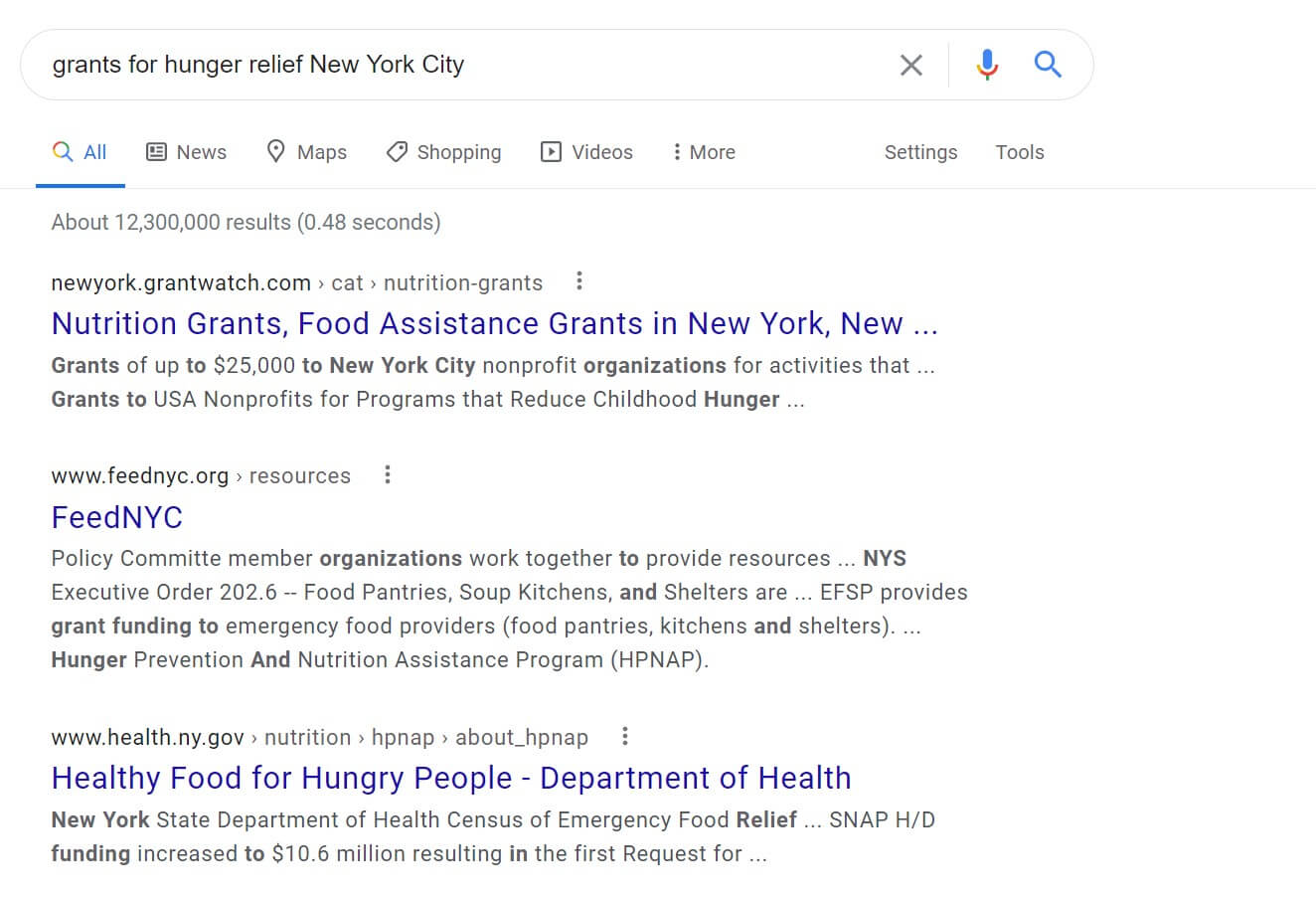Grant Writing Tool Kit to Win More Grants
This grant writing tool kit can help you find the right grants for your organization, write them, and win more grants. It’s not hard to do, but it does take a strong effort on your part to identify and understand which grants are the lowest-hanging fruit.
But first, a little story about We Are Immediate
We design websites for non-profit organizations. Similar to Grant Platforms, there are also web design platforms. When we started, we submitted on a wide array of verticals from schools to law firms — because our team can do anything. Our success rate was low compared to the number of proposals we submitted. Once we focused our efforts on our primary vertical (non-profit web design), we were able to increase our award hit rate. An added benefit was we that greatly improved our search engine optimization.
What does that have to do with winning grants?
Like a web design company, non-profits need to focus on funders who most likely to fund your missions’ vertical. Grant writing needs to be written in a style that resonates with your funder. But first, you need to tell your story, clearly and with feeling to have the emotional impact that moves people to respond.
Step 1: Organize information about all your programs
The first step toward getting funding is knowing the why, what, where, when, and how of all your programs (remember that in English 101?). Keep a shareable doc so people can see and add to it.
- The Problem: “According to the Literacy New York, 45% of the U.S. population lacks the literacy skills to participate fully in family, work, and community.”
- Your mission: “Our mission is to help children become lifelong readers by empowering communities to provide individualized instruction with measurable results.”
- Strategy for that program: With our school partners, identify all students who are six months or more behind grade level in reading. Provide tutoring to 100 students a week in each district to bring them up to reading level
- Requirements for that program to fulfill strategy: We need to increase the reach in 5 counties to identify and tutor children
- What resources you need to accomplish that goal: Tracking software and marketing dollars
- Who / what you impact: Children living in NY County ages 7 – 18
- The resulting success statistics: Tutor 1500 students by the end of 2021
**NOTE: Stats are illustrative only. Reading Partner’s website does an amazing job of illustrating my point.

Much of this information should be illustrated somewhere on your website for funders, donors, and sponsors. Always be answering the why of why anyone should care about your organization and your constituents.
Step 2: Find the right grants for your organization
Since We Are Immediate specializes in Non-profit web design, it is going to be a bit difficult to win a proposal for a University if there are 10 other developers that ONLY design University websites. The same goes for grant research. And YES, you may have to subscribe to a database of grants. Picking the right grant database for your team might take trial and error. Some of these are available through Tech Soup, and some libraries also have subscriptions.
Grant Databases
Below is a list of several grant databases. The first one, Grant Gopher, starts at a free model and then has a moderate cost. I really liked its easy-to-use grant search tool. Some of them are more complex.
Grant Gopher Search Tool Starts FREE and then, $9/Month. Yes, this is totally worth free.

Funds for NGOs: $49/Year. Also offers free resources.
GrantWatch: $18/Week – I’d like to try this one out so I could see what types of grants they have. Isn’t $18 worth it?
Grants.gov: Looks like it’s a free search for Government Grants. Please check it out.
Foundation Center : $199/Month. Less expensive if you commit upfront.
Wells Fargo: Free check it out
Google Search Results

You can set up a search on Google and receive alerts for grants in your area and your program areas. For example, I did a search on Grants for Adult Literacy and found a few examples of grantors:
DG Literacy, and
Believe in Reading

I am sure there are many more, but using google and setting up alerts is a good way to get notified of grants in your area.
Sidebar: A list of the most philanthropic companies in the world Click Here
Step 3: Talk their talk
There is going to be a different level of formality when you write a government grant, versus one funded by Ben and Jerry’s or Apple, or Microsoft. While I’m not a grant writing specialist, I am a content specialist, and I’ve also learned through trial and error, what makes a winning and losing proposal.
Step 4: Read books, get trained, or hire an expert
Grant writing is not only a skill, but some might say an art. If you choose to write your own grants, realize that it does take time, education, and great writing skills to be able to achieve your goal. There are books to read as well as courses to take. Remember that powerfully conveying your need, your impact, and your ability to deliver a successful program is paramount to writing a grant that delivers. Of course, there is a reason why non-profits hire grant writers — and that might be another route for your organization.
In the end…
If grant writing is not your thing, are other sources of revenue for your organization such as your donors and corporate sponsors. Check out the other posts below to find out more about improving your revenue via these important sources.
Check Our Non-Profit Web Development Services»
Don’t forget: We offer 1-hour pro-bono consultation support on topics ranging from branding and marketing to web design and development. Contact us through the link below.

